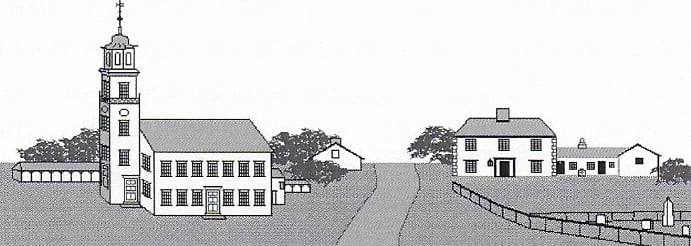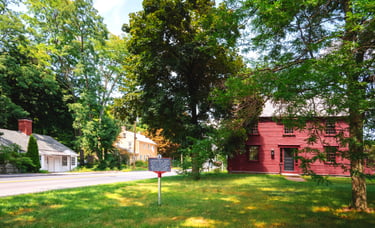The land that comprises the West Boylston as we know today, had once been parts of Lancaster, Sterling, Boylston, Holden, and Shrewsbury. In 1643, the northeastern area, a large tract of land was deeded to early settlers by Nashaway leader Sholan. to Thomas King. This tract of land was known as Lancaster (Nashaway Plantation). The Southeastern section was deeded from Sagamore Quiquonaset in 1674, and a final section of undetermined size was deeded from George Taranto, a nephew of Chief Sholan in 1701.
The early English settlers in the area that is now West Boylston came in the 1720s. These pioneers, being farmers were attracted to the area by the fertility of the soil and the opportunities for development afforded by its location at the site where the Quinapoxet River joins the Stillwater River to become the southern branch of the Nashua River. They set up farms in sections of what are now Lancaster, Shrewsbury, Boylston. Sterling, Holden and Worcester. Through most of the 1700s, the greater part of our area was agricultural and part of Shrewsbury. In 1786, Boylston (including what is now West Boylston) split from Shrewsbury.
Many New England towns became a separate enties in the 1790s because people were tired of walking long distances to church. In Massachusetts in those days there was really only one denomination that had any great number of members, and that was Congregational, In the early 1790s, when Boylston parish proposed a new meetinghouse, Ezra Beaman and other settlers in the western part of what was then Boylston, wanted the meetinghouse built nearer to them, in the area now known as West Boylston. His proposal was voted down.
Undeterred, Ezra Beaman called a meeting of the people in the western part of town, and volunteered to pay for the building a new meetinghouse. Construction began in 1793, and the new church was dedicated on New Year's Day in 1795 on the site where the Congregational Church sits now. The State Legislature was petitioned and West Boylston was granted precinct status in 1796.
Generally, a town needed to have an existing meetinghouse and a certain number of residents to be incorporated. In 1808, the General Court, under Governor Samual Adams, incorporated 14 square miles of West Boylston as a town. Ezra Beaman served simultaneously as Selectman, Treasurer and the first Representative of the Town to the Legislature. The town clerk elected that day was Robert Bailey Thomas.




